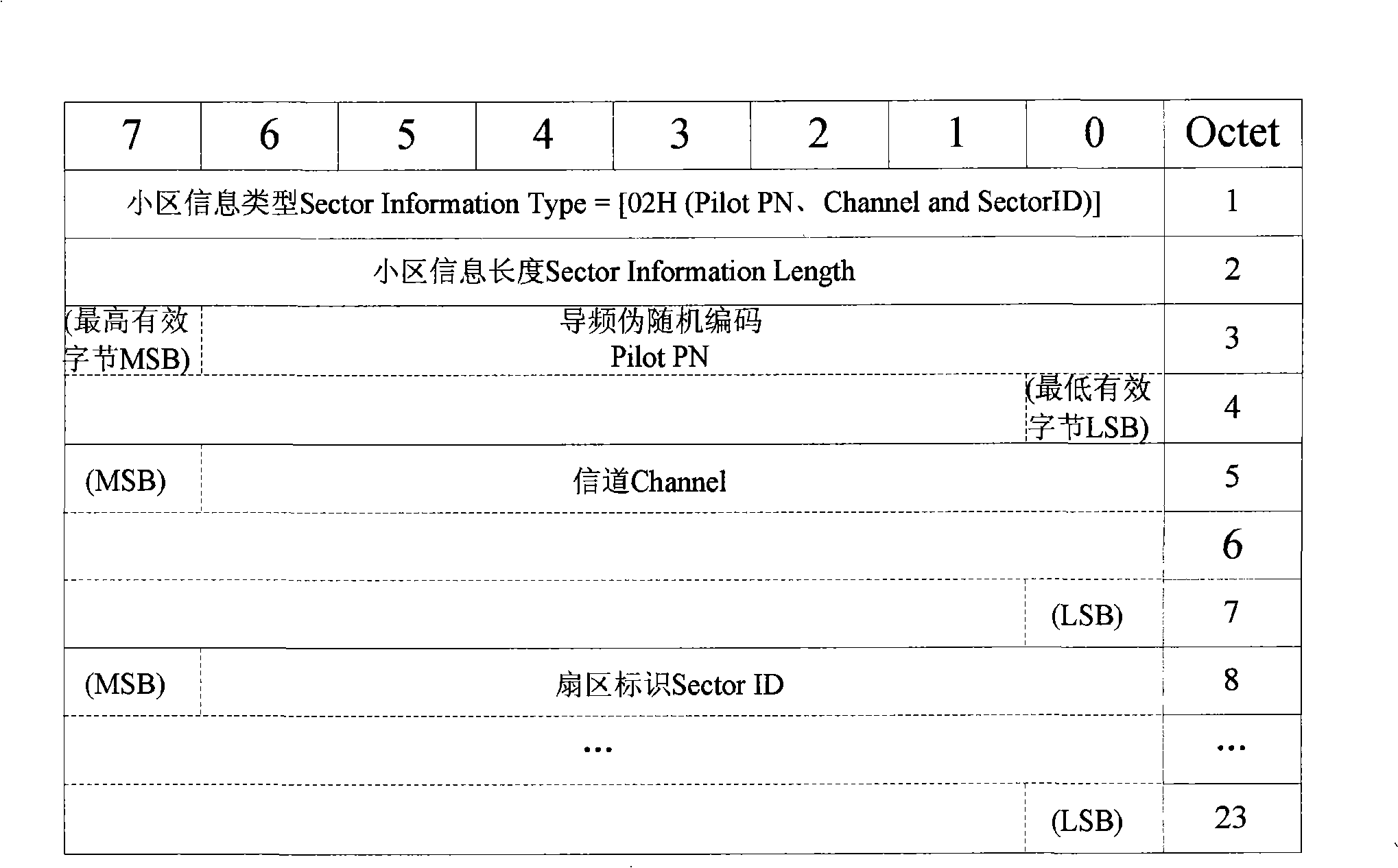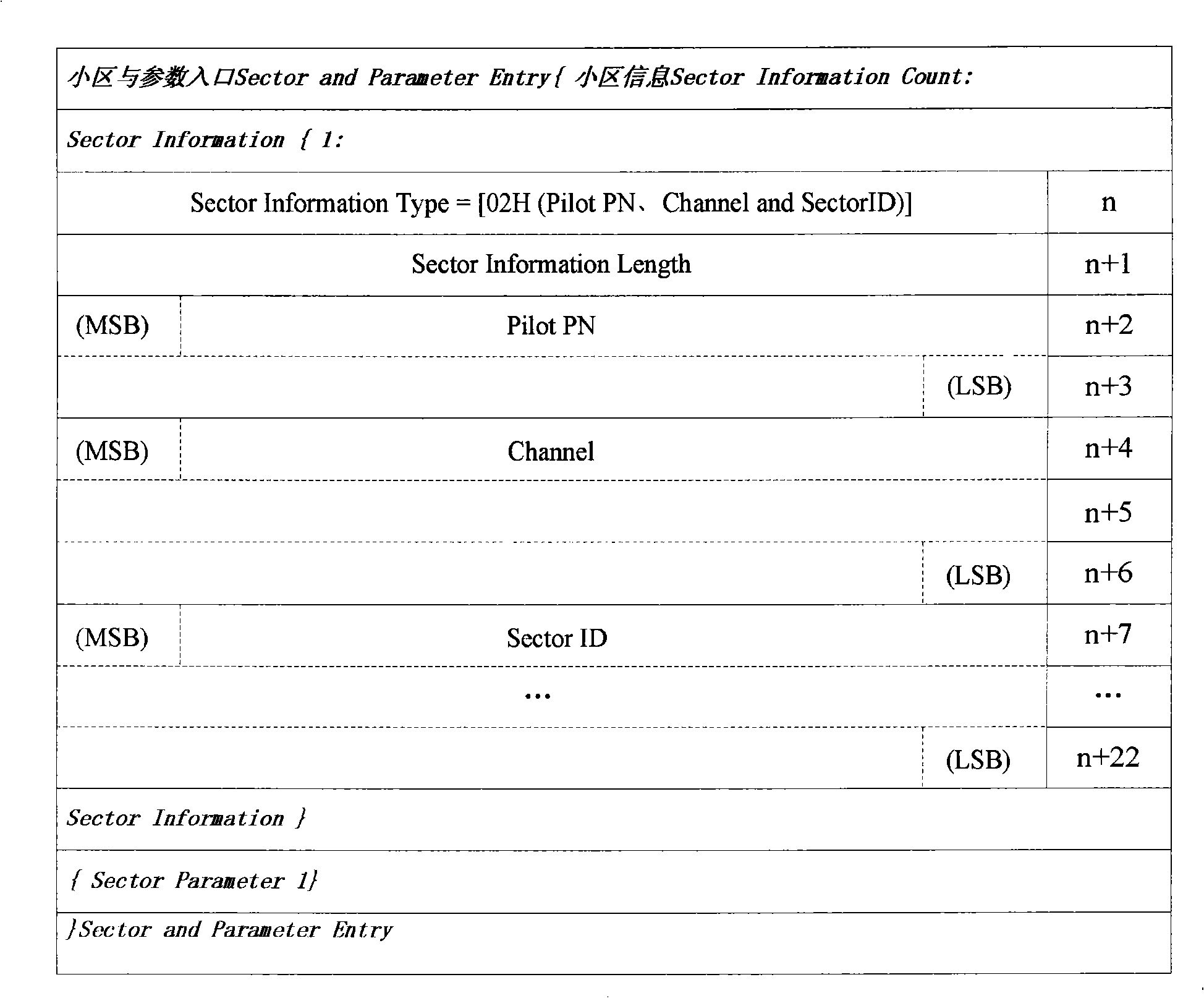Method for solving pilot frequency pseudo-random encoding confusion in switching course
A technology of pseudo-random coding and cell identification, applied in electrical components, wireless communication, transmission systems, etc., can solve problems such as differences in processing results and lack of processing methods
- Summary
- Abstract
- Description
- Claims
- Application Information
AI Technical Summary
Problems solved by technology
Method used
Image
Examples
Embodiment Construction
[0015] The present invention proposes a message interaction during handover between ANs. If the message carries the Pilot PN information of the target cell, the message also carries the cell identification information of the target cell. The cell identification information can be stored in the AN. The cell is uniquely identified, and the location of the current PilotPN is indicated through cell identification information, that is, the cell to which the Pilot PN belongs. The access network judges the target cell participating in the handover according to the Pilot PN and the cell identification information in the message.
[0016] The present invention utilizes the existing 128-bit sector ID SectorID in the protocol as globally unique cell ID information. According to the existing agreement, the value of the SectorID is unique in the AN, and putting the SectorID in the cell information can uniquely identify a cell in the AN. Wherein, the cell identification information describ...
PUM
 Login to View More
Login to View More Abstract
Description
Claims
Application Information
 Login to View More
Login to View More - R&D
- Intellectual Property
- Life Sciences
- Materials
- Tech Scout
- Unparalleled Data Quality
- Higher Quality Content
- 60% Fewer Hallucinations
Browse by: Latest US Patents, China's latest patents, Technical Efficacy Thesaurus, Application Domain, Technology Topic, Popular Technical Reports.
© 2025 PatSnap. All rights reserved.Legal|Privacy policy|Modern Slavery Act Transparency Statement|Sitemap|About US| Contact US: help@patsnap.com


